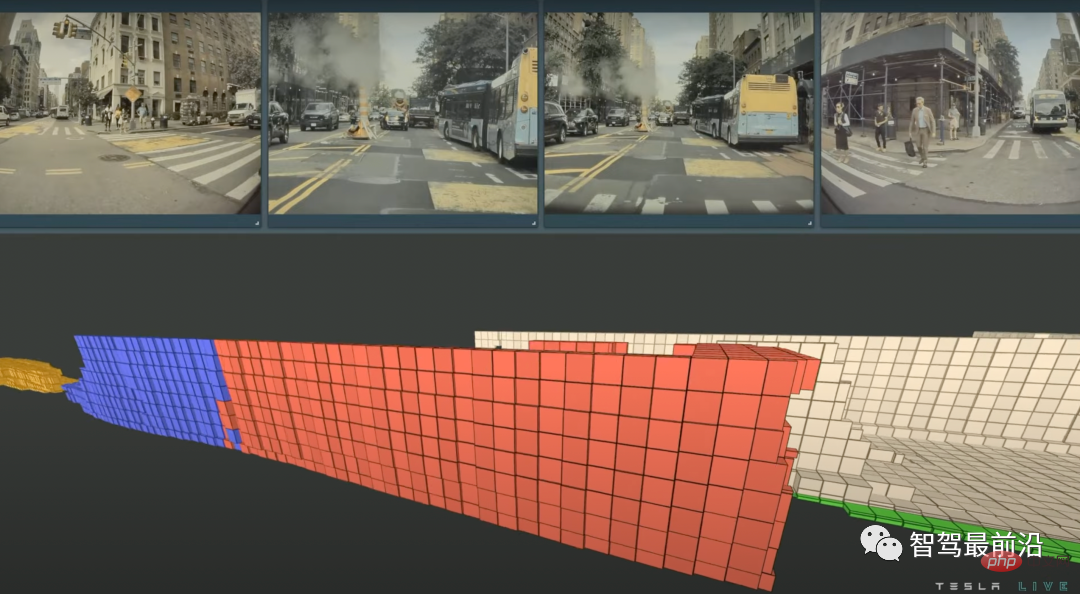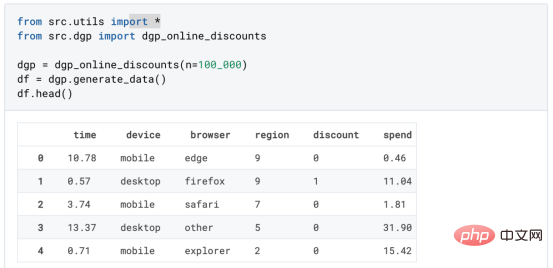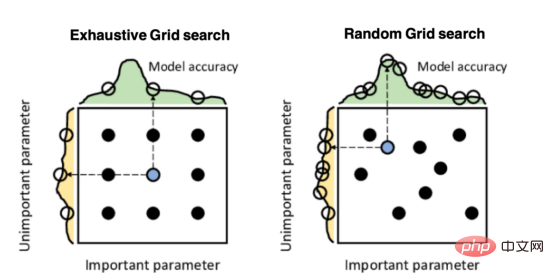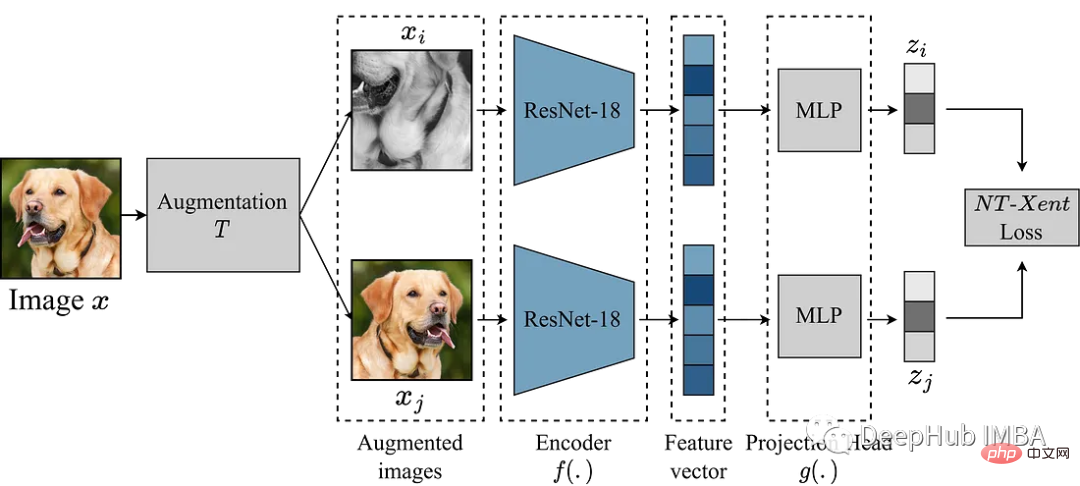 Technology peripherals
Technology peripherals AI
AI A must-read for AI product managers! A beginner's guide to getting started with machine learning algorithms
A must-read for AI product managers! A beginner's guide to getting started with machine learning algorithmsThe content about interesting machine learning algorithms is the topic of the next article. This article is shared for students who are AI product managers and is highly recommended to students who have just entered this field!

We have talked before about the artificial intelligence industry, the second curve of product managers, and the differences between the two positions. This time we will go one step deeper - interesting explanations of machine learning algorithms.
Machine learning algorithms may sound a bit unfathomable. I understand that many people, including me, will have a headache at the beginning. I try not to use formulas and only present them in the form of cases. We will gradually deepen from the whole to the part.
1. Overview of machine learning algorithms
First, let’s understand the basic concepts of machine learning algorithms.
Machine learning is a method for computers to learn and improve through data, and machine learning algorithms are the tools to achieve this goal
Simply put, a machine learning algorithm is a set of rules or models that can learn based on input data and then make predictions or decisions based on the learned knowledge.
Fun Moment: Imagine you are participating in a mysterious treasure hunt. In the game, you need to find the location of the treasure based on a treasure map. This treasure map is the data, and all you have to do is find the treasure by analyzing the data. In real life, we can achieve this task through machine learning algorithms.
The machine learning algorithm is like an intelligent treasure-hunting robot that can learn patterns from a large amount of data and then make predictions or decisions based on these patterns. The core goal of machine learning algorithms is to reduce the mapping error from data to results, thereby making our products more intelligent and accurate.
The application scenarios of machine learning algorithms are very wide. Common applications include classification problems, cluster analysis and regression problems. These three application scenarios have their own applications in real life. Next, their application scenarios and practical applications will be introduced respectively

2. Scenario 1: Classification Problem
1) Application scenarios: Classification judgment, label prediction, behavior prediction.
2) Solution principle: Train the known data and predict the unknown data (including two classifications and multi-classifications. For example, the prediction result has only two discrete values, such as "0/1, yes /No" is a two-class classification. If the prediction result is multiple discrete values, such as "A/B/C", it is a multi-classification).
Common classification algorithms include the following:
- Decision tree: Decision tree is a classification algorithm based on a tree structure, which classifies data through a series of questions.
- Support vector machine: Support vector machine is a classification algorithm based on geometric concepts that performs classification by finding the maximum margin hyperplane in the data space.
4) Case: Preventing Spam
Spam filtering is a typical classification problem. We can use support vector machine algorithm to solve this problem. By training the model, we can accurately determine whether the email is spam or normal based on the keywords, sender and other information in the email
3. Scenario 2: Cluster analysis
1) Application scenarios: User grouping, user portrait
2) Solution principle: Cluster analysis is the process of dividing a set of data into several categories. These categories are based on intrinsic properties or similarities of the data. To sum up its characteristics in one word, "birds of a feather flock together".
3) Common clustering algorithms
- K-means clustering: K-means clustering is a distance-based clustering algorithm. It divides data points into K categories by iteratively calculating the distance between them.
- Hierarchical clustering: Hierarchical clustering is a distance-based clustering algorithm. It gradually divides similar data points into one category by calculating the distance between data points.
4) Case: Customer Segmentation
For customer segmentation, it is a common cluster analysis application. We can use the K-means clustering algorithm to group customers into different categories based on their consumption amount, purchase frequency and other attributes in order to formulate precise marketing strategies
4. Scenario 3: Regression problem
1) Application scenario: Predict future prices and sales.
2) Solution principle: Fit a graph (straight line/curve) according to the distribution of the sample, form a system of equations, input parameters, and predict specific values in the future.
3) Common regression algorithms
- Linear regression: Linear regression is a regression algorithm based on linear relationships. It predicts future data by fitting a linear relationship between data points.
- Decision tree regression: Decision tree regression is a regression algorithm based on a tree structure. It predicts the target value through a series of questions.
- Support vector machine regression: Support vector machine regression is a regression algorithm based on geometric concepts. It predicts the target value by finding the maximum margin hyperplane in the data space.
4) Case stock price prediction
Stock price prediction is a typical regression problem. We can use linear regression or support vector machine regression algorithms to predict future stock prices based on historical stock price data.
5. Final words
To summarize, the main purpose of this article is to introduce mainstream machine learning algorithms. Next, I will analyze the algorithms of the three application scenarios one by one. If you want to know what algorithm knowledge, please share it in the comment area, welcome to create and share together
I hope it can bring you some inspiration, come on!
Please do not reprint this article. This article was originally published by @六星笑 Product on Everyone is a Product Manager without permission
The title picture comes from Unsplash, based on the CC0 protocol
The above is the detailed content of A must-read for AI product managers! A beginner's guide to getting started with machine learning algorithms. For more information, please follow other related articles on the PHP Chinese website!
 特斯拉自动驾驶算法和模型解读Apr 11, 2023 pm 12:04 PM
特斯拉自动驾驶算法和模型解读Apr 11, 2023 pm 12:04 PM特斯拉是一个典型的AI公司,过去一年训练了75000个神经网络,意味着每8分钟就要出一个新的模型,共有281个模型用到了特斯拉的车上。接下来我们分几个方面来解读特斯拉FSD的算法和模型进展。01 感知 Occupancy Network特斯拉今年在感知方面的一个重点技术是Occupancy Network (占据网络)。研究机器人技术的同学肯定对occupancy grid不会陌生,occupancy表示空间中每个3D体素(voxel)是否被占据,可以是0/1二元表示,也可以是[0, 1]之间的
 基于因果森林算法的决策定位应用Apr 08, 2023 am 11:21 AM
基于因果森林算法的决策定位应用Apr 08, 2023 am 11:21 AM译者 | 朱先忠审校 | 孙淑娟在我之前的博客中,我们已经了解了如何使用因果树来评估政策的异质处理效应。如果你还没有阅读过,我建议你在阅读本文前先读一遍,因为我们在本文中认为你已经了解了此文中的部分与本文相关的内容。为什么是异质处理效应(HTE:heterogenous treatment effects)呢?首先,对异质处理效应的估计允许我们根据它们的预期结果(疾病、公司收入、客户满意度等)选择提供处理(药物、广告、产品等)的用户(患者、用户、客户等)。换句话说,估计HTE有助于我
 因果推断主要技术思想与方法总结Apr 12, 2023 am 08:10 AM
因果推断主要技术思想与方法总结Apr 12, 2023 am 08:10 AM导读:因果推断是数据科学的一个重要分支,在互联网和工业界的产品迭代、算法和激励策略的评估中都扮演者重要的角色,结合数据、实验或者统计计量模型来计算新的改变带来的收益,是决策制定的基础。然而,因果推断并不是一件简单的事情。首先,在日常生活中,人们常常把相关和因果混为一谈。相关往往代表着两个变量具有同时增长或者降低的趋势,但是因果意味着我们想要知道对一个变量施加改变的时候会发生什么样的结果,或者说我们期望得到反事实的结果,如果过去做了不一样的动作,未来是否会发生改变?然而难点在于,反事实的数据往往是
 Mango:基于Python环境的贝叶斯优化新方法Apr 08, 2023 pm 12:44 PM
Mango:基于Python环境的贝叶斯优化新方法Apr 08, 2023 pm 12:44 PM译者 | 朱先忠审校 | 孙淑娟引言模型超参数(或模型设置)的优化可能是训练机器学习算法中最重要的一步,因为它可以找到最小化模型损失函数的最佳参数。这一步对于构建不易过拟合的泛化模型也是必不可少的。优化模型超参数的最著名技术是穷举网格搜索和随机网格搜索。在第一种方法中,搜索空间被定义为跨越每个模型超参数的域的网格。通过在网格的每个点上训练模型来获得最优超参数。尽管网格搜索非常容易实现,但它在计算上变得昂贵,尤其是当要优化的变量数量很大时。另一方面,随机网格搜索是一种更快的优化方法,可以提供更好的
 使用Pytorch实现对比学习SimCLR 进行自监督预训练Apr 10, 2023 pm 02:11 PM
使用Pytorch实现对比学习SimCLR 进行自监督预训练Apr 10, 2023 pm 02:11 PMSimCLR(Simple Framework for Contrastive Learning of Representations)是一种学习图像表示的自监督技术。 与传统的监督学习方法不同,SimCLR 不依赖标记数据来学习有用的表示。 它利用对比学习框架来学习一组有用的特征,这些特征可以从未标记的图像中捕获高级语义信息。SimCLR 已被证明在各种图像分类基准上优于最先进的无监督学习方法。 并且它学习到的表示可以很容易地转移到下游任务,例如对象检测、语义分割和小样本学习,只需在较小的标记
 盒马供应链算法实战Apr 10, 2023 pm 09:11 PM
盒马供应链算法实战Apr 10, 2023 pm 09:11 PM一、盒马供应链介绍1、盒马商业模式盒马是一个技术创新的公司,更是一个消费驱动的公司,回归消费者价值:买的到、买的好、买的方便、买的放心、买的开心。盒马包含盒马鲜生、X 会员店、盒马超云、盒马邻里等多种业务模式,其中最核心的商业模式是线上线下一体化,最快 30 分钟到家的 O2O(即盒马鲜生)模式。2、盒马经营品类介绍盒马精选全球品质商品,追求极致新鲜;结合品类特点和消费者购物体验预期,为不同品类选择最为高效的经营模式。盒马生鲜的销售占比达 60%~70%,是最核心的品类,该品类的特点是用户预期时
 人类反超 AI:DeepMind 用 AI 打破矩阵乘法计算速度 50 年记录一周后,数学家再次刷新Apr 11, 2023 pm 01:16 PM
人类反超 AI:DeepMind 用 AI 打破矩阵乘法计算速度 50 年记录一周后,数学家再次刷新Apr 11, 2023 pm 01:16 PM10 月 5 日,AlphaTensor 横空出世,DeepMind 宣布其解决了数学领域 50 年来一个悬而未决的数学算法问题,即矩阵乘法。AlphaTensor 成为首个用于为矩阵乘法等数学问题发现新颖、高效且可证明正确的算法的 AI 系统。论文《Discovering faster matrix multiplication algorithms with reinforcement learning》也登上了 Nature 封面。然而,AlphaTensor 的记录仅保持了一周,便被人类
 研究表明强化学习模型容易受到成员推理攻击Apr 09, 2023 pm 08:01 PM
研究表明强化学习模型容易受到成员推理攻击Apr 09, 2023 pm 08:01 PM译者 | 李睿 审校 | 孙淑娟随着机器学习成为人们每天都在使用的很多应用程序的一部分,人们越来越关注如何识别和解决机器学习模型的安全和隐私方面的威胁。 然而,不同机器学习范式面临的安全威胁各不相同,机器学习安全的某些领域仍未得到充分研究。尤其是强化学习算法的安全性近年来并未受到太多关注。 加拿大的麦吉尔大学、机器学习实验室(MILA)和滑铁卢大学的研究人员开展了一项新研究,主要侧重于深度强化学习算法的隐私威胁。研究人员提出了一个框架,用于测试强化学习模型对成员推理攻击的脆弱性。 研究


Hot AI Tools

Undresser.AI Undress
AI-powered app for creating realistic nude photos

AI Clothes Remover
Online AI tool for removing clothes from photos.

Undress AI Tool
Undress images for free

Clothoff.io
AI clothes remover

AI Hentai Generator
Generate AI Hentai for free.

Hot Article

Hot Tools

EditPlus Chinese cracked version
Small size, syntax highlighting, does not support code prompt function

VSCode Windows 64-bit Download
A free and powerful IDE editor launched by Microsoft

ZendStudio 13.5.1 Mac
Powerful PHP integrated development environment

MantisBT
Mantis is an easy-to-deploy web-based defect tracking tool designed to aid in product defect tracking. It requires PHP, MySQL and a web server. Check out our demo and hosting services.

SublimeText3 Chinese version
Chinese version, very easy to use





